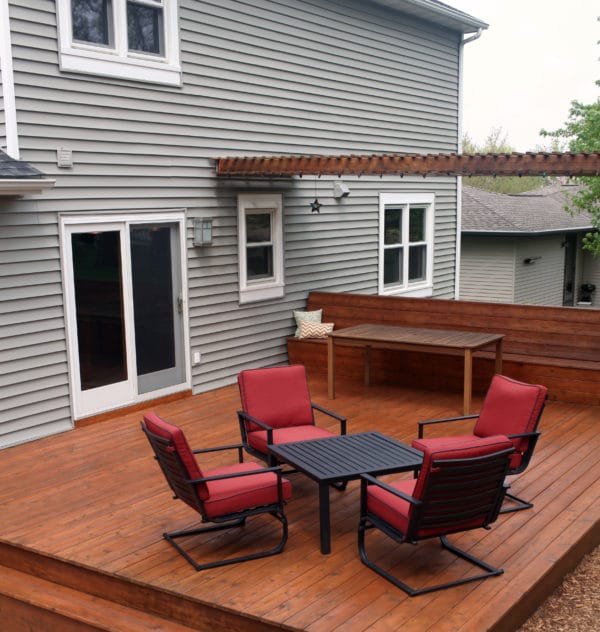When it comes to maintaining the integrity of your roofing system, one crucial component that often goes overlooked is the roof decking. Roof decking, also known as sheathing, serves as the foundation for your shingles or roofing material. It plays a vital role in the structural integrity and overall durability of your roof. But how often does roof decking need to be replaced? In this blog, we'll explore the factors that influence the lifespan of your roof decking and when it might be time for a replacement.
Understanding Roof Decking
Roof decking is typically made of plywood or oriented strand board (OSB) and is installed directly on top of the roof trusses or rafters. Its primary purpose is to provide a solid substrate for roofing materials, such as shingles, tiles, or metal panels. Properly installed and well-maintained decking ensures that your roof can withstand the elements and external stressors.
Factors Affecting the Lifespan of Roof Decking
The longevity of your roof decking depends on several key factors:
Material Quality: The type and quality of the roof decking material play a significant role in determining how long it will last. Plywood is generally more durable than OSB and tends to have a longer lifespan.
Climate: The climate in which your home is located can affect the lifespan of your roof decking. Extreme temperature fluctuations, prolonged exposure to sunlight, and high humidity levels can lead to faster deterioration.
Proper Installation: A properly installed roof decking will perform better and last longer. If it's not installed correctly, it can be prone to premature damage and deterioration.
Ventilation: Adequate attic ventilation is essential for maintaining the temperature and humidity levels in your attic space. Poor ventilation can cause excessive heat and moisture buildup, which can accelerate roof decking decay.
Roofing Material: The type of roofing material installed on top of the decking can impact its lifespan. Some roofing materials, like slate or metal, are heavier and may require more robust decking to support them.
Maintenance: Regular roof inspections and maintenance can help identify issues early on and extend the life of your roof decking. Neglecting maintenance can lead to costly repairs or replacements down the line.
Signs Your Roof Decking Needs Replacement
Now that we've established the factors that affect the lifespan of your roof decking let's discuss the signs that indicate it might be time for a replacement:
Moisture Damage: Water damage to the roof decking can occur due to leaks, condensation, or prolonged exposure to rain. Signs of moisture damage include sagging, rot, mold, or mildew growth on the decking material.
Sagging or Bouncing: If your roof feels bouncy or you notice a sagging appearance, it could be a sign of compromised roof decking. This can be a result of water damage, poor material quality, or inadequate ventilation.
Visible Damage: Check for visible signs of damage, such as cracks, splits, or holes in the decking material. These can be caused by various factors, including impact from falling branches or hail.
Shingle Problems: If you notice that your shingles are curling, buckling, or missing, it might be a sign that the roof decking underneath is deteriorating and no longer providing proper support.
Increased Energy Bills: An increase in your energy bills can be indicative of poor insulation, which may result from damaged or inadequate roof decking.
Age of Roofing System: The age of your roofing system is a significant factor. As roof decking ages, it becomes more susceptible to wear and tear. If your roof is approaching the end of its expected lifespan, it might be time to consider replacement.
Roof Decking Replacement Process
When it's time to replace your roof decking, here's a general overview of the process:
Inspection:A professional roofing contractor will conduct a thorough inspection of your roof to assess the extent of the damage and determine if the decking needs replacement.
Removal: The existing roofing material will be removed to expose the damaged decking. Any necessary repairs to the underlying structure will be made.
Replacement: The old decking will be replaced with new, high-quality material. Plywood is often recommended for its durability and longevity.
Roofing Material Installation: Once the new decking is in place, your chosen roofing material will be installed over it, ensuring a watertight and durable finish.
Inspection and Clean-Up: After the installation is complete, the roofing contractor will perform a final inspection to ensure everything is in order. They will also clean up the job site, removing any debris.
Maintaining your roof decking is crucial for the longevity and performance of your roofing system. While there's no fixed timeframe for when roof decking needs replacement, monitoring for signs of damage and conducting regular inspections is the best way to ensure your roof remains in good condition. If you suspect that your roof decking may need replacement, it's essential to consult with a professional roofing contractor who can assess the situation and recommend the appropriate course of action. Proper maintenance and timely replacement when necessary will help protect your home and ensure the longevity of your roofing system.


No comments yet